Contents
Linsey Fuller, the Creative Director of Goumi Kids, embarked on a unique journey into the apparel industry. Initially, Linsey commenced her career on the supplier side, selling fabric, zippers, buttons, and elastic to various companies spanning the West Coast. Following nearly nine years in this sector, Linsey transitioned into motherhood and recognized a gap in the market for stylish children's streetwear. Subsequently, she launched her brand, "Age to Come Apparel."

After relocating to China due to her husband's job, where they have resided for the past nine years, Linsey's friend Lili, the CEO of Goumi Kids, approached her with an enticing proposition. Lili invited Linsey to join her team as a Creative Director, a proposition that Linsey enthusiastically accepted. Since then, Linsey and Lili have become collaborative partners, driving innovation and growth within the company.
Bringing clarity into the workflow of the design team
Goumi Kids, a children's clothing brand, presents a wide array of clothing choices for its clientele, ranging from outerwear to mitts and boots. Before adopting Techpacker, their design team utilized Excel and Illustrator to compile tech packs and line sheets while attempting to maintain organization. Their primary challenge stemmed from the absence of a unified, live document accessible to the entire design team, resulting in synchronization issues and a lack of clarity regarding the latest updates and versions of the tech pack.
Since transitioning to Techpacker, Linsey's workflow has been transformed. She begins by designing within Illustrator, utilizing its artboards, and then uses Techpacker's plugin to seamlessly upload her designs to the individual styles within the platform. Once uploaded, the entire design team collaborates within the Techpacker workspace, each focusing on their respective tasks. This system ensures everyone remains informed about every update, with the latest version of the tech pack prominently displayed on the platform.
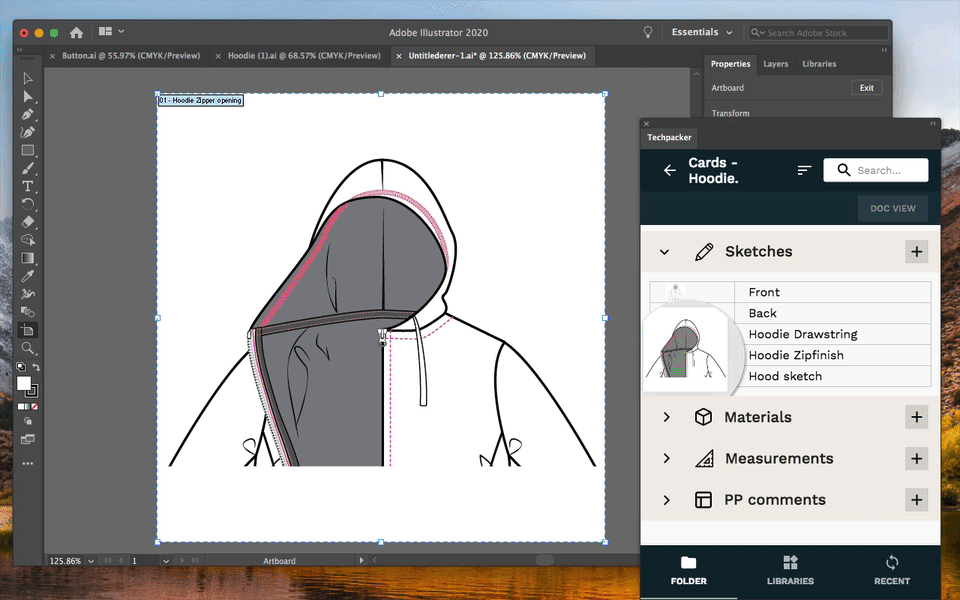
Keeping all design data synced with Techpacker’s Connect Cards
Before integrating Techpacker into their workflow, the team relied on storing all design data on Google Drive. This decentralized approach resulted in a fragmented process, where Linsey, in particular, was burdened with the task of piecing together disparate pieces of information.
For instance, she had to manually connect materials with corresponding colors or prints, often necessitating multiple back-and-forth interactions. Once Linsey aggregated all the necessary data, she would then compile it and attach it alongside the tech pack before sending it out. This disjointed process not only consumed significant time and effort but also increased the likelihood of errors or inconsistencies creeping into the final documentation.
The introduction of Techpacker's product development platform and its Connect Cards feature has transformed Linsey's approach to handling design data, effectively abolishing the laborious task of storing scattered elements on Google Drive. Now, Linsey can establish a centralized library encompassing materials, colors, and prints, all seamlessly linked to various styles within her tech packs.
Moreover, these connections remain intact as the tech packs are circulated, providing Linsey with enhanced efficiency and organization throughout the design process. And if any of the cards need to be updated Linsey can update only one card and all the linked ones will be synced automatically.
“In this way, if we ever switch suppliers or need to revisit a particular product, everything remains linked, sparing me the hassle of repeatedly reattaching elements. It significantly streamlines the organization process.” - says Linsey.
Overcoming product development challenges with Techpacker’s reporting tools
Before adopting Techpacker, Linsey's design team encountered significant challenges in maintaining organization throughout their product development process. Their existing system consisted of using Slack for scheduling via a calendar. However, their reliance on Slack was hindered by limitations imposed by the Chinese VPN, preventing them from utilizing the platform to its full potential.
Compounding this issue was the fragmentation of their product development data. Design specifications and Line Sheets were scattered across multiple platforms, primarily Excel and Google Drive. This decentralized approach made it difficult for the team to access and update crucial information efficiently. As a result, they grappled with coordination issues, version control discrepancies, and delays in decision-making, hindering their overall productivity and workflow effectiveness.
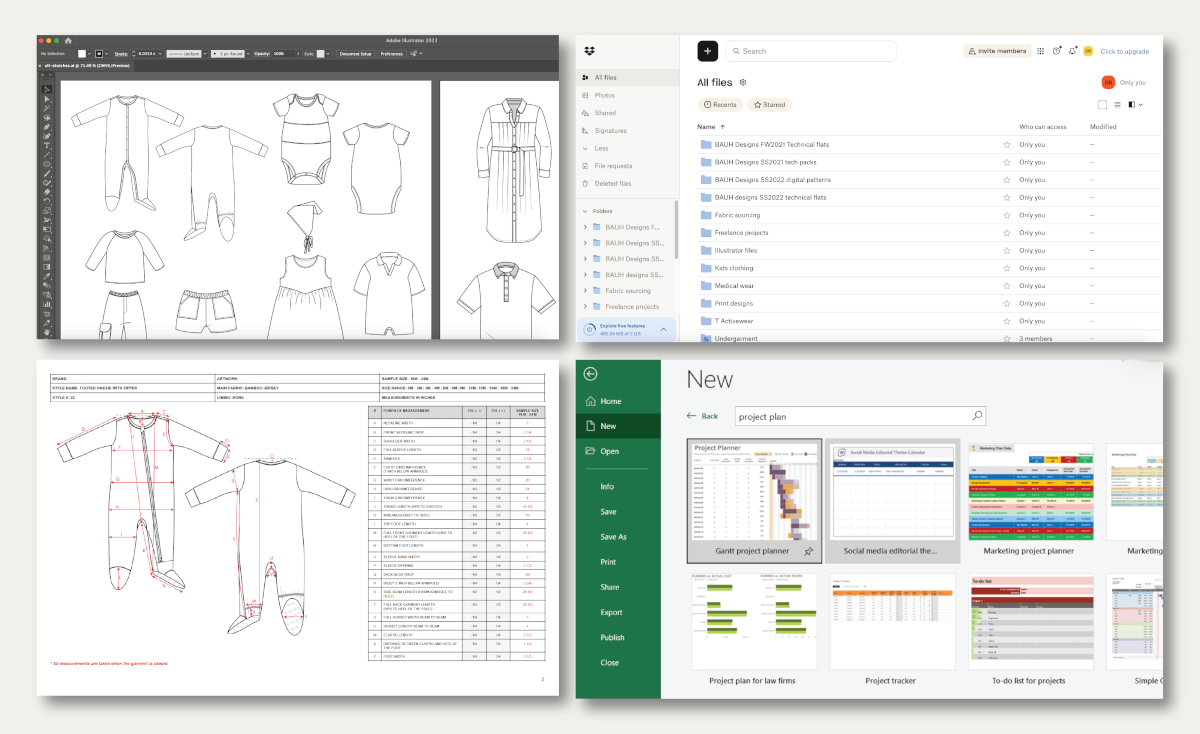
Techpacker proved to be a game-changer for Linsey's design team by addressing their organizational challenges head-on. With Techpacker, they successfully centralized all their information, streamlining their workflow and eliminating the need to juggle multiple platforms. Introducing features like Line Sheets, Connect Cards, and the Library revolutionized their approach to product development.
Initially, without Line Sheet capability, Linsey had to resort to cumbersome workarounds, such as taking screenshots of thumbnails in Techpacker and manually creating Line Sheets in Illustrator. However, with the introduction of Line Sheets within Techpacker, this process became significantly more efficient and flexible. Now, Linsey can easily rearrange cards, create custom reports tailored to different clients or suppliers, and seamlessly incorporate parts or entire collections as needed.
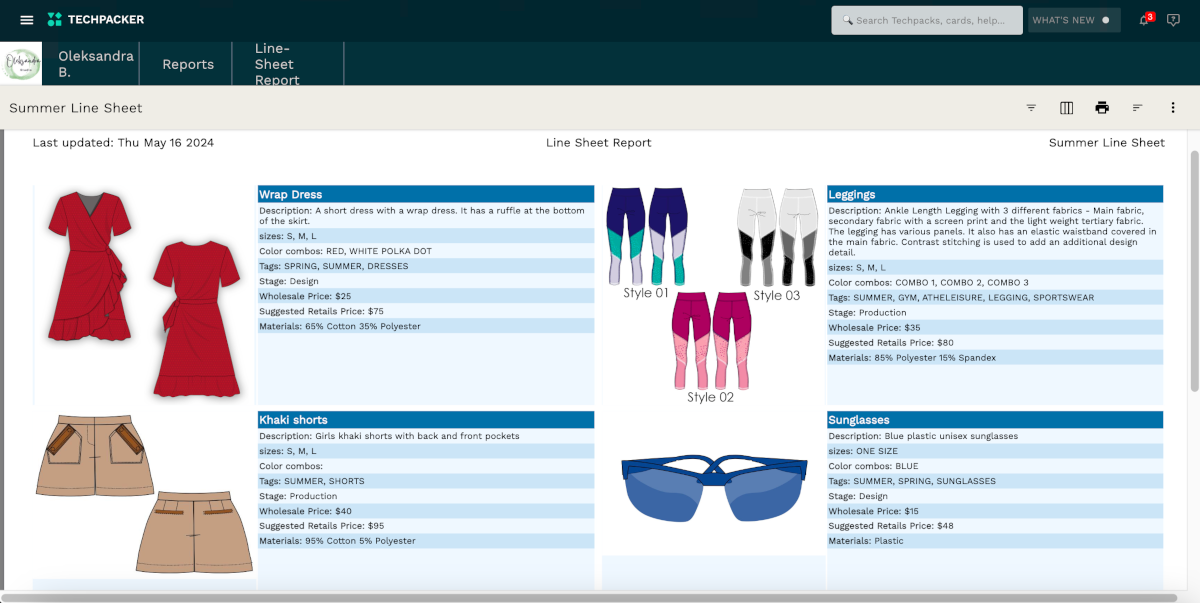
Moreover, the ability to generate custom reports proved invaluable, especially when working with different suppliers. Linsey can now curate specific products, colors, and prints for each supplier, ensuring that only relevant information is shared. This feature not only saves time but also enhances communication and collaboration with suppliers.
Streamlining sizing with automated grading
Before integrating Techpacker into their workflow, size grading presented a significant challenge for Linsey's team, characterized by a chaotic and fragmented experience. Their process involved maintaining size charts in Excel, alongside line art in Illustrator, leading to disjointed communication and collaboration.
Coordination with the factory exacerbated the complexity, as it relied heavily on email exchanges for relaying changes and updates. This led to a proliferation of Excel spreadsheets with identical names but varying timestamps, causing confusion and making it difficult to track the latest version of each document.
The integration of Techpacker into Linsey's team's workflow revolutionized their size grading process, providing a centralized platform for all their sizing data and related information. By consolidating everything in one location, including the product details and other relevant data, Techpacker eliminated the previous fragmentation and chaos.
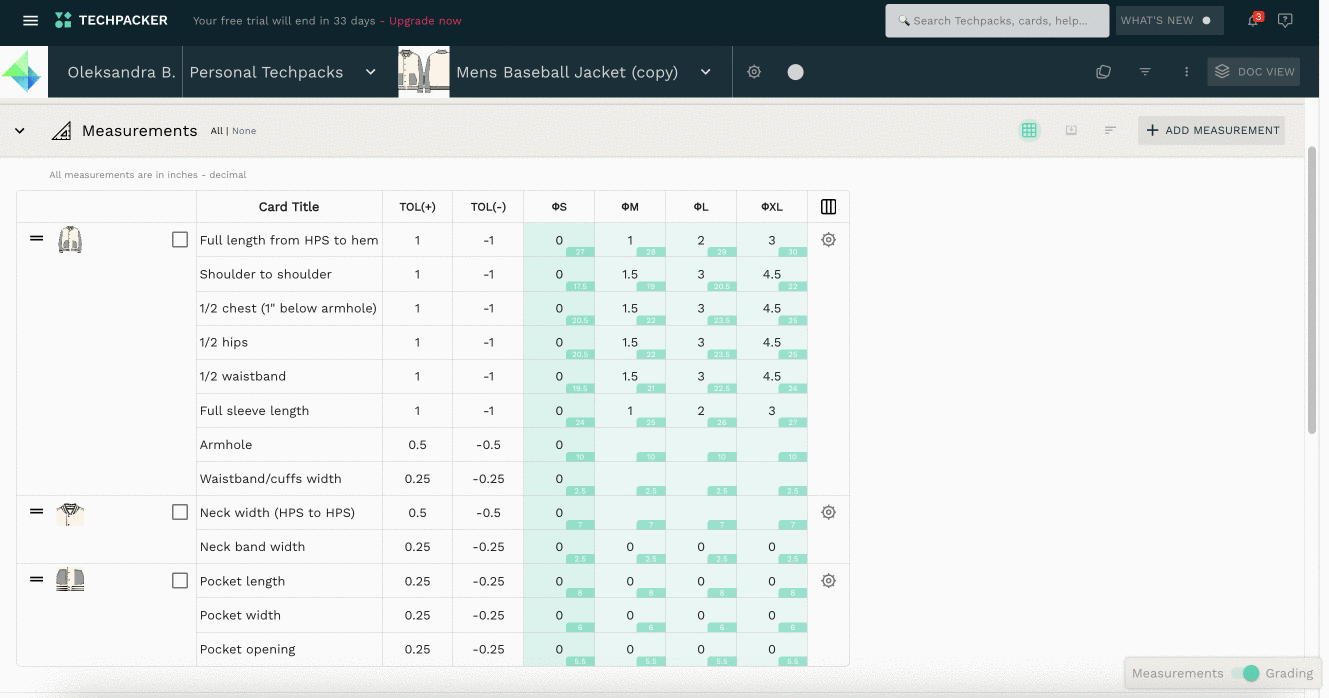
"One of the most significant benefits of using Techpacker for size grading was the ability to easily track and manage previous samples and the changes made to them. This meant that if there was a need to revert back to the measurements of an earlier sample, it could be done seamlessly within the platform. This feature streamlined the process and saved valuable time that would have otherwise been spent searching through emails or multiple documents to find the necessary information." - says Linsey.
Furthermore, Techpacker's customizable columns provided additional flexibility and efficiency in managing size grading. The team could tailor the columns to their specific needs, making it easier to organize and track the data relevant to their sizing process.
Easy onboarding for the entire team
Before adopting Techpacker, Linsey's design team faced several onboarding challenges. Initially, understanding the software and its capabilities was a significant hurdle. The team needed comprehensive guidance on how to navigate the platform effectively and utilize its features to streamline their workflow. Additionally, coordinating training sessions posed logistical challenges, especially considering the team's varied schedules and locations.
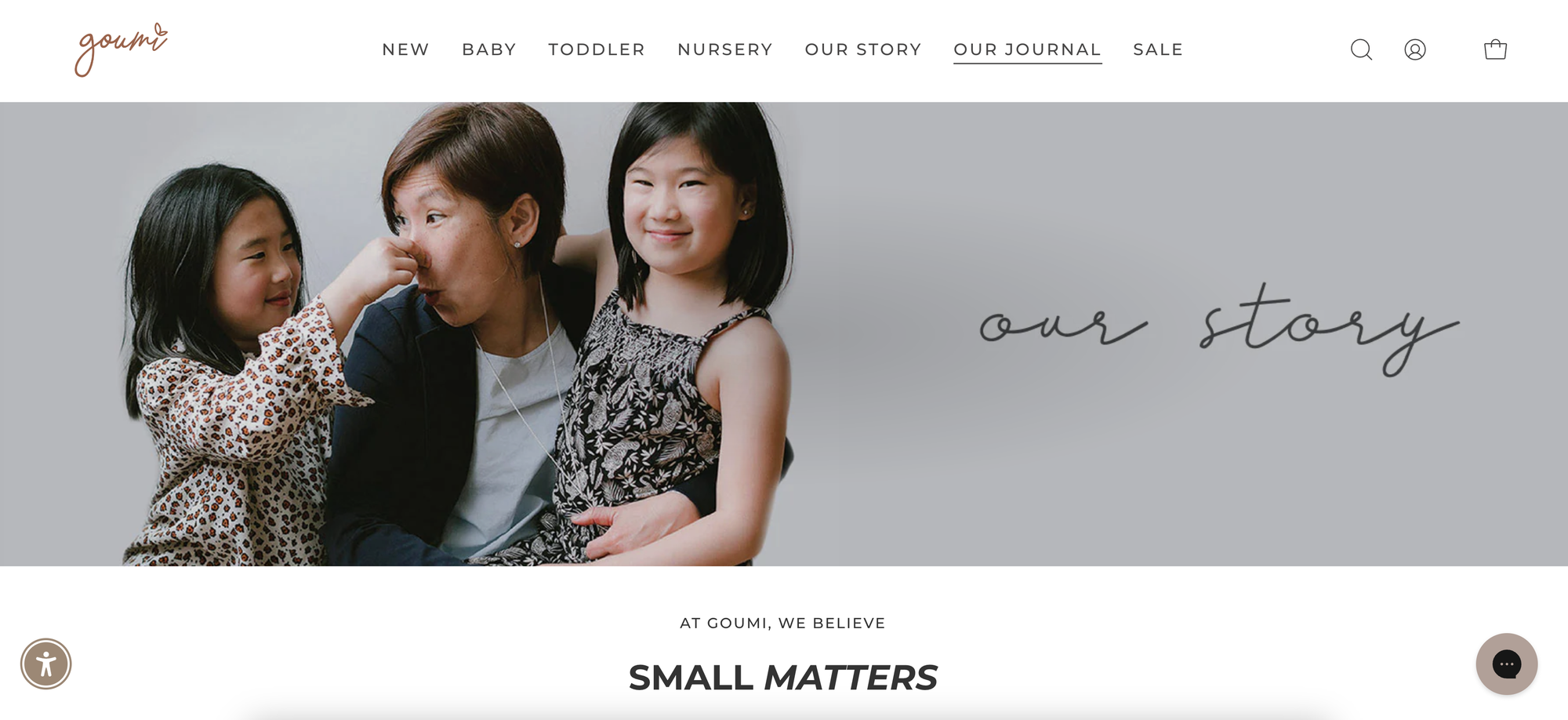
“The Techpacker team dedicated considerable time to ensuring I comprehensively understood the software and its capabilities. Through live video sessions, we meticulously walked through processes such as adding and grading products, focusing specifically on the functionalities most relevant to my needs. Rather than overwhelming with a generic overview, they tailored the guidance to my specific requirements, ensuring optimal utilization of my time without unnecessary distractions. Moreover, their responsiveness is exceptional; they eagerly listen to user feedback and occasionally incorporate requested features. Working with them has been immensely beneficial, and their collaborative approach makes them a standout team to collaborate with.” - says Linsey


